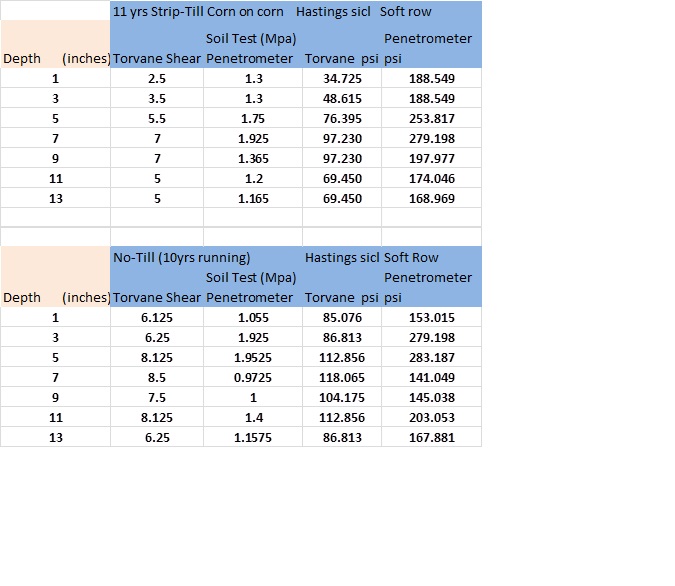Published June 8, 2020 | By Mike Petersen
It comes to you hot from the fields with growing corn at the V4 stage. In East Central Nebraska my cohort Pat McNaught and I have been digging up in between corn rows and right in the row where the present crop is growing and taking soil resistance measurements to follow up with the 2019 project and learn even more of what is happening below ground. This year we were able to get to a long term No-Till field and then same vintage of Strip-Till duration.
In the chart above you can observe in the soft row what the soil condition is like. Pat and I dug this five days after the 4+ inch rain in late May. The corn in both fields was V4 to V5 stage and not under any stress, the soil moisture condition was 75-80% of field capacity at 6 inches and 85% at 12 inches.
The lateral (side-to-side) soil resistance values in the soft row is significantly less in the Strip Till ground. In the upper 5 inches of the soil profile the vertical soil resistance is less dense than the No-Till. As we observed these two fields within 7 miles of one another, two very dedicated farmers to their systems and very good corn production 250-295 bushels per acre yields (irrigated), we observed the root systems, both were starting the second set of nodal roots. The big difference was the Strip Tilled corn was 23 inches deep and the No-Till was 16 inches.
We are not casting stones here, but you get to look at some differences in how a No-Till field stacks up to a long term Orthman 1tRIPr Strip-Till field.
We will be monitoring these fields as the season progresses. As of this early part of June all systems are go to hit a top notch yield.
